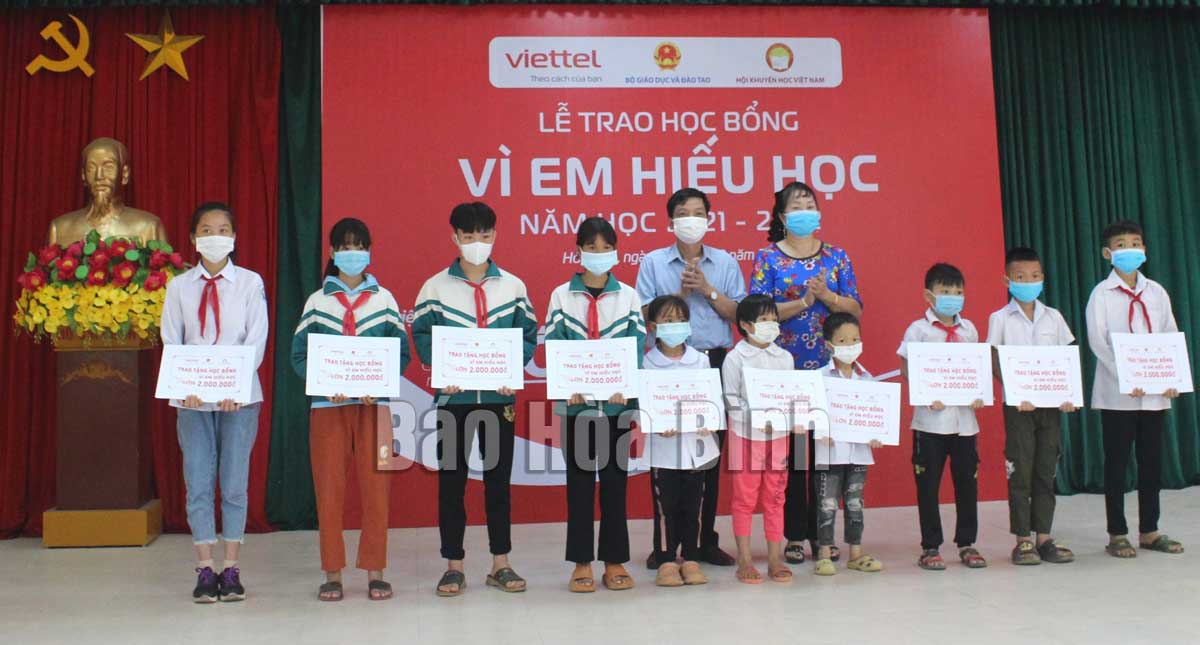



Representatives from Lac Son District Education and Training Department, Study Encouragement Society and Hardworking Poor Pupil Foundation at "Studious pupils” scholarship event sponsored by Viettel Hoa Binh.
Due to reinforced investment of resources, district schools were equipped with basically sufficient material facilities for school year 2021-2022, said Bui Van Danh, Director of District Education and Training Department. Through procurement and purchase bids, the district authorities allocated priorities for facilities striving for "National Standard School” title and those in underprivileged areas. Schools with dilapidated refectories and toilets were screened and catalogued for repairs and overhauls.
On the other hand, for schools in SUAs, the district authorities assign priorities in allocating and supplementing competent teaching staff with distinguished records, especially those in charge of first grade classes in order to achieve parity between areas of disparate conditions. Furthermore, special attention was regularly paid towards pupils of ethnic minorities, campaigning 100% them to attend school. In order to ensure pupils’ benefits and rights, the schools were provided with close instructions about material facilities and curriculum preparedness. Emulation movement "Two goods” (good teachers, good pupils) was constantly promoted.
The district authorities implemented precise, adequate and timely measures in realizing the policies of the Party and State toward pupils of ethnic minorities in SUAs, with state expenses for students amounting to 20 billion VND per year. Besides, numerous programs, welfare and study encouragement activities were introduced to support the students, particularly Viettel Hoa Binh’s "Studious pupils” scholarships, Ve hamlet school built with funds from VOV…, along with gifts and assistance packages from various charities and philanthropists.